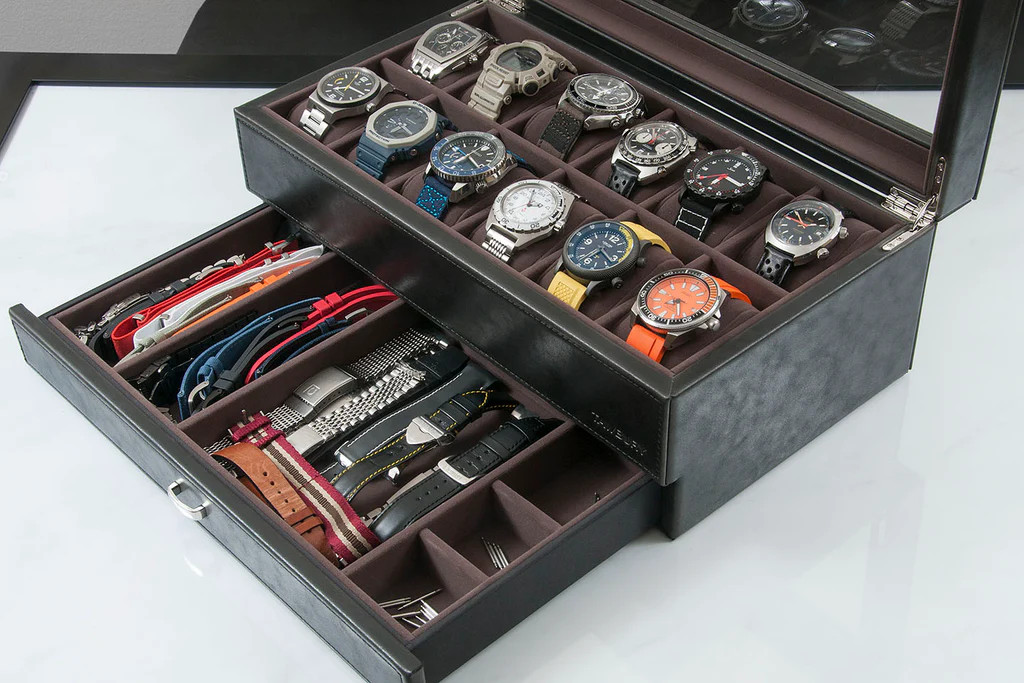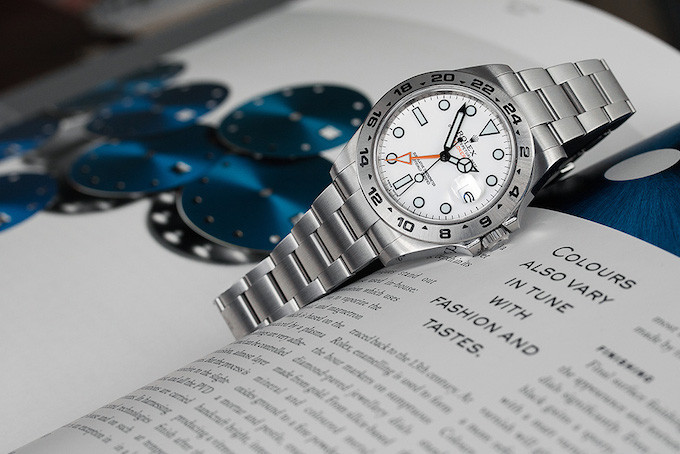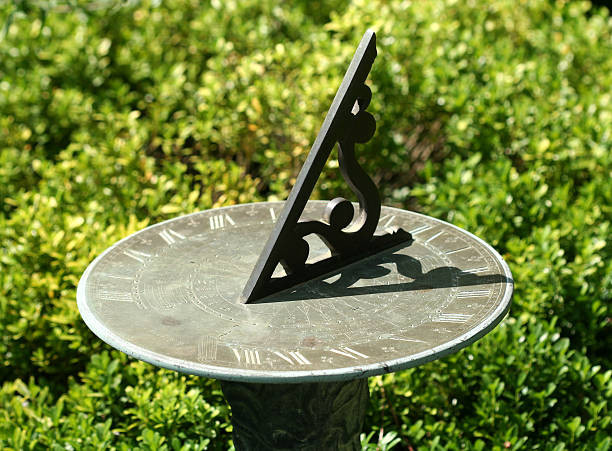As watch enthusiasts, we know that our timepieces are more than just accessories – they’re investments, both financially and emotionally. Proper watch storage is crucial for maintaining the value, functionality, and beauty of your collection. Whether you’re safeguarding a luxury piece or preserving your everyday wear, knowing how to store watches correctly can make all the difference. In this comprehensive guide, we’ll explore the best practices and options for watch storage, ensuring your timepieces stay in pristine condition for years to come.
Why Proper Watch Storage Matters

Before diving into the specifics of how to store watches, it’s important to understand why proper storage is so vital. Watches, especially mechanical ones, are intricate machines that require care and attention even when they’re not on your wrist. Improper storage can lead to various issues, including:
- Moisture damage
- Oil degradation in mechanical movements
- Battery corrosion in quartz watches
- Scratches and other physical damage
By implementing the right watch storage solutions, you can protect your timepieces from these potential problems and ensure they’re always ready for wear or resale.
Tips and Best Practices for Storing Watches
Let’s explore some essential tips and best practices to keep in mind when storing your watches:
Consider the Risks of Long-Term Storage
When storing watches for extended periods, it’s crucial to understand the potential risks, especially for mechanical timepieces. Autoxidation can cause the oils in mechanical watches to harden, leading to potential movement issues. To mitigate this risk:
- Wear your automatic watches regularly, or at least once a month
- For manual wind watches, consider setting a schedule to wind them periodically
- If storing for months, plan to have the watch serviced before wearing it again
- For serious collectors, invest in a timegrapher to monitor watch health
Don’t forget about quartz watches! While they’re less susceptible to movement issues, they have their own storage concerns. Always remove the battery from a quartz watch before long-term storage to prevent corrosion and leakage.
Combat Moisture with Silica Gel
Moisture is the enemy of watches, particularly for vintage pieces with limited water resistance. To protect your timepieces from humidity:
- Add silica gel packets to your watch storage containers
- Replace silica gel packets periodically to ensure continued effectiveness
- Use silica gel to protect watch boxes and paperwork as well
Preserve Watch Boxes and Paperwork
For luxury watches or potential resale value, keeping original packaging and documentation is crucial. Make sure to:
- Store the original box, warranty card, and certificates of authenticity
- Keep any accessories that came with the watch
- Preserve appraisals and insurance documents
- If you bought a watch without its original box, consider finding an authentic one
How To Store Watches: Choosing the Right Solution
Now that we’ve covered the basics of how to store watches, let’s explore various storage options to suit different needs and preferences:
1. Watch Stands: Quick and Convenient
Watch stands are ideal for in-rotation pieces or smaller collections. They offer several benefits:
- Easy access for daily wear
- Protection for the watch face, bezel, and crystal
- Attractive display options for your favorite pieces
While not suitable for long-term storage, watch stands are perfect for keeping your everyday timepieces safe and visible.
2. Storage Boxes and Cases: Versatile Protection
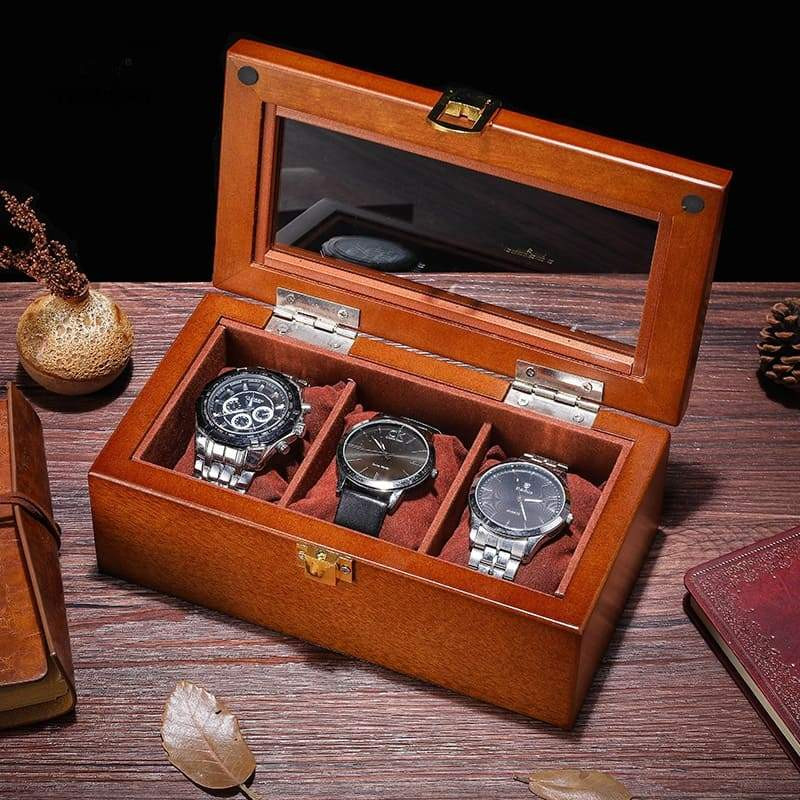
Watch boxes and cases are versatile options for both short-term and long-term storage. They offer:
- Protection from dust and light exposure
- Organization for multiple watches
- Display options with glass-topped cases
Remember to add silica gel packets to your watch box for added moisture protection, especially for long-term storage.
3. Safes and Deposit Boxes: Maximum Security
For high-value watches or long-term storage, a safe or safety deposit box provides ultimate security. When using these options:
- Always include silica gel packets to combat moisture
- Wrap watches in soft cloth or use watch pouches for added protection
- Consider using watch pillows to maintain bracelet or strap shape
4. Watch Rolls: Perfect for Travel
Watch rolls are an excellent choice for travelers or those with limited storage space. They offer:
- Compact storage for up to six watches
- Protection during transport
- Easy organization for rotating collections
5. Watch Winders: Keeping Automatics Running
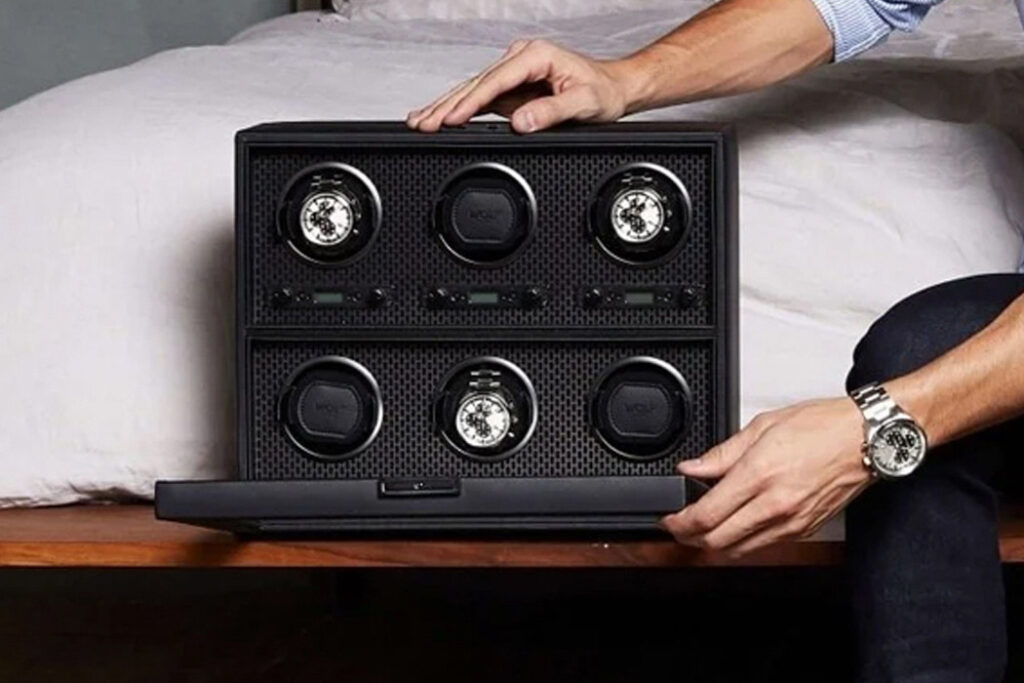
For automatic watch enthusiasts, a watch winder can be a valuable tool. Watch winders:
- Keep automatic movements running when not worn
- Prevent oil hardening in stored watches
- Often double as attractive display pieces
While not necessary for all collectors, watch winders can be particularly useful for those with multiple automatic watches in rotation.
6. Drawer Storage: Simple and Effective
A dedicated drawer can be an effective watch storage solution for many collectors. To make the most of drawer storage:
- Use watch rolls or individual pouches to protect each piece
- Add silica gel packets to control moisture
- Organize watches to prevent scratching or bumping
Frequently Asked Questions
Q: How do you store watches when not in use?
A: The best way to store watches when not in use depends on the duration. For short-term storage, a watch stand or dedicated drawer works well. For longer periods, consider a watch box with silica gel packets or a safe for valuable pieces.
Q: How do you store expensive watches?
A: Expensive watches require extra care in storage. Use a secure location like a safe, maintain proper humidity levels with silica gel, and keep all original packaging and documentation. Regular servicing is also crucial for maintaining value.
Q: How do you store watches for travel?
A: Watch rolls or travel cases are ideal for storing watches during travel. They offer compact protection and organization for multiple timepieces.
Q: Should you turn off a watch when not in use?
A: For quartz watches, removing the battery for long-term storage is recommended to prevent corrosion. Mechanical watches don’t need to be “turned off,” but should be wound periodically if not worn.
Conclusion
Understanding how to store watches properly is an essential skill for any watch enthusiast or collector. By following these guidelines and choosing the right storage solutions for your needs, you can ensure that your timepieces remain in excellent condition, whether they’re worn daily or preserved for future generations.
Remember, the key to effective watch storage is protection from moisture, regular maintenance, and choosing the right storage method for your specific needs. Whether you opt for a simple watch stand, a sophisticated watch winder, or a high-security safe, the most important factor is consistent care and attention to your valuable timepieces.
By mastering the art of watch storage, you’re not just protecting your investments – you’re preserving the joy and passion that comes with owning and wearing fine timepieces. So take the time to store your watches properly, and enjoy the peace of mind that comes with knowing your collection is safe and sound.

